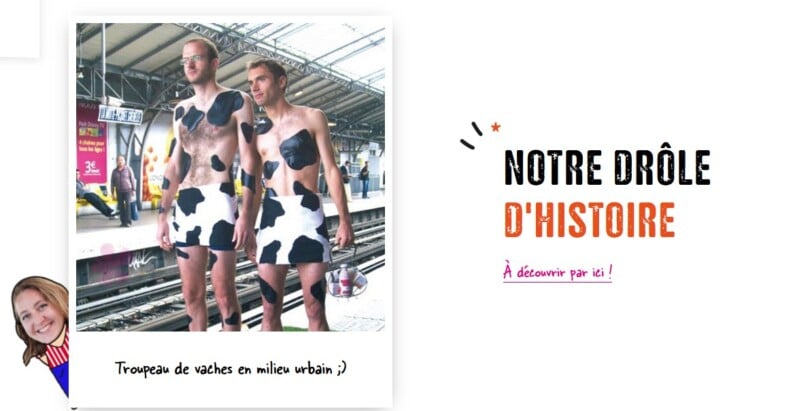Emotions play a role key to decision-making. Brands are using this phenomenon to speak to consumers in a different way, with inspiring stories. What are the best practices for building impactful emotional storytelling? Find out how to create heartfelt, engaging stories, while avoiding missteps, with Françoise Landuré, a consultant in communication.

Imagine a shy pupil, Gabriel, whose life changes in an instant thanks to... biscuits. In a funny and touching advert by Intermarché, broadcast in early 2025, Gabriel suddenly becomes the star of his school. His classmates admire his drawings, choose him for their teams and jostle to sit next to him. Even the sports teacher succumbs to his charm, or rather his Chabrior biscuits. With humour and lightness, this film celebrates the magical effect of Intermarché products: good, affordable and capable of creating memorable moments.
In this advertisement, Intermarché focuses on the the power of emotions to appeal to consumers. By using humour and tenderness, the brand creates an instant bond with the viewer and increases the impact of its message.
Why are emotions such a powerful lever for brands?
Because these intense, spontaneous reactions have a profound influence on our choices and the way we interpret the world around us.
Our emotions guide our decisions far more than we realise. And our purchasing decisions in particular. In 2003, Gerald Zaltman, a professor at Harvard Business School, claimed that 95 % of purchasing decisions were based on emotions. According to a study by Google and EssenceMediacom published in 2024, 71 % of French people admit to having felt 2 to 4 different emotions at each stage of their purchasing journey, all categories taken together. The emotions evoked are satisfaction, curiosity, confidence, enthusiasm, tranquillity and joy.
Positive emotions linked to a brand or product create a connection with consumers, strengthening their loyalty.
They can even influence the perception of price: a premium-priced product is more appealing if it is associated with a pleasant experience. In addition, strong emotions play a key role in impulse buying. Limited promotions, special offers and engaging messages encourage people to take action.
Emotions are at the heart of our choices. In a saturated market, where attracting attention is a real challenge, companies that know how to use emotions have a real strategic advantage.
Storytelling, to get to the heart of your audience
Storytelling is a communication technique that involves conveying a message in a narrative rather than an informative or factual manner. It uses key elements such as characters, context, conflict and resolution to capture attention, provoke emotion and leave a lasting impression.
Have you had this experience before? You present a prospect with the benefits of your product or service, backed up by evidence. You see resistance, even though your arguments are solid. What if you changed your approach? Start by telling a funny anecdote or a captivating story related to the product or service. Then introduce the benefits. You'll find that your audience will be much more receptive.
Stories arouse emotions and capture attention.
If you can make people laugh or move them, you're much more likely to convert your audience into customers. A technical data sheet or a promotional message can be convincing, but a story is engaging. It humanises your brand, giving it aspirations and a journey. In this way, it gives meaning, creates a sense of identity and a sense of belonging.empathy and allows you to identify with your values. The result? A loyal, involved audience ready to follow you.
How do you create a story?
Laying the foundations for your story
Clarifying your identity
Structure your story
Start by clarifying your brand identity. What are your core values? What is your mission? Ask yourself what makes you unique and why it matters to your audience. Next, identify the key moments in your journey. What trials have you been through? What challenges have you overcome? These elements bring authenticity and depth to your story. Include your current commitments to anchor your story in the present and show that your values are translated into concrete action.
Once these foundations have been laid, structure your story. In all good storytelling, there should be a beginning, a development and a conclusion.
| Start | Your origin, your raison d'être |
| Development | Your obstacles and successes |
| Conclusion | Your vision or commitments for the future |
Creating authentic stories
Speak with passion, tell anecdotes and make your audience a key character in your story. Finally, spread your story across a variety of media, such as your social networks, your advertising or your website, to bring it to life and make an impact. On 23 March 2025, for example, Patagonia devoted a Instagram post to its workshop in Reno, Nevada, where over 50,000 garments are given a new lease of life every year. It highlights the expertise of the technicians who restore damaged items with care and pride. This story highlights a simple gesture: repair rather than throw away. It's about making things last rather than consuming them.
Patagonia has established itself as a committed brand thanks to an inspiring narrative based on sustainability, responsibility and love of the product.
La Haribo advertising on the theme of "Parents' Reunion" (to be released in April 2025) is part of a brand strategy based on nostalgia and the pleasure of sharing. A formal get-together is transformed into a joyful moment of complicity when adults, having tasted Haribo sweets, speak in children's voices. This playful reversal embodies the brand's central promise: to awaken the child in all of us, summed up by its slogan "Haribo, life is beautiful, for young and old alike".
A good story isn't told just once: it's told through all your actions and communications.
Michel et Augustin, a prime example of successful storytelling
Sound secret ? Simple, authentic communication, rooted in its true history: two friends from business school, driven by the dream of creating their own company with a human and accessible approach. From the outset, this authenticity became its signature.
Its storytelling is spread across all its media (website, newsletter, social networks, etc.). We follow the journey of its founders, from school to success, through the various ups and downs of their entrepreneurial adventure. Each product also tells its own little story: how it's made, the selection of ingredients, the spotlight on the employees... everything is designed to create a close link with the audience.
What's more, Michel et Augustin stands out for its unique language - "bananeraie", "trublions", "toqués" - and a visual identity that is instantly recognisable. This storytelling model shows that a strategy based on emotions and transparency can be formidable.

The golden rules and pitfalls of emotional storytelling
Used properly, emotional storytelling transforms a brand into an engaging and memorable experience. But when it comes to savvy consumers, a false narrative can backfire.
Since its creation in 2014, the dating site Bumble has been deploying a powerful storytelling. Created by a former Tinder executive who suffered harassment there, it defines itself as "the app that empowers women". Only women can start conversations. Bumble claims to be "the place where people go to learn how to make and keep healthier connections". In this way, the site aims to combat misogyny.
However, in 2024, an advertising campaign triggered a storm of criticism on social networks, including a call for a boycott. This large-scale, deliberately irreverent campaign featured slogans such as "A vow of celibacy is not the answer". and "You shouldn't stop using dating apps or you'll become a nun". They were perceived as guilt-inducing and anti-feminist, and therefore in contradiction with the brand's commitments. Bumble was forced to withdraw its advertisements and issue a public apology.
Best practice in emotional storytelling
To avoid the pitfalls of emotional storytelling, 5 best practices are essential:
- Remain authentic: the story must reflect a truth, whether personal or linked to the brand's history.
- Involve your community: consumers like to take part in an adventure that they feel is sincere and close to them.
- Align actions and rhetoric: a promise must be backed up by concrete, visible commitments.
- Target the right emotions: choose feelings that are in tune with your audience and your message, without overdoing it.
- Test and adjust: before launching a campaign, gather feedback to anticipate any misunderstandings or criticisms.
To make an impact, a brand needs to tell a story that resonates deeply with the aspirations and emotions of its audience. Success depends on an alchemy of authenticity, consistency and emotional impact, a winning trio that inspires and engages over the long term.
Get trained!
Want to find out more about brand storytelling? Discover the training programme Brand content and storytelling: optimising your brand strategy.
Key points
- Identify the different types of stories
- Identify the brand's history and values
- Writing your story
Examples of practical work
- Storyboarding a brand story
- Write the attack and the punchline of the storytelling for this brand
All in all, Brand storytelling is a major asset for companies wishing to enrich their communications. This approach not only reinforces the impact of messages, but also creates authentic links with the public. By mastering the fundamentals of storytelling, professionals can refine their strategy and better meet the expectations of their audiences. This paves the way for more powerful narratives and brands that resonate in a more effective and lasting way.





